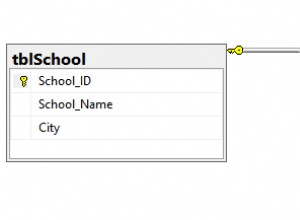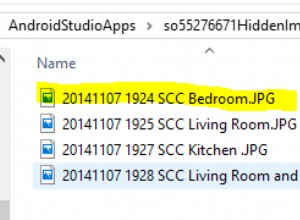Quello che stai chiedendo è fondamentalmente un PIVOT ma MySQL non ha una funzione pivot, quindi puoi replicarla usando un CASE istruzione con una funzione aggregata.
Se conosci i valori, puoi codificare la soluzione in modo simile a questo:
select id,
max(case when component_id = 1 then data end) Email,
max(case when component_id = 2 then data end) Firstname,
max(case when component_id = 3 then data end) Lastname,
max(case when component_id = 4 then data end) Phone
from yourtable
group by id;
Vedi SQL Fiddle con demo
Il risultato è:
| ID | EMAIL | FIRSTNAME | LASTNAME | PHONE |
-----------------------------------------------------------
| 1 | [email protected] | firstname1 | lastname1 | phone1 |
| 2 | email2 | firstname2 | lastname2 | phone2 |
Immagino che tu abbia una tabella per associare component_id a un nome, quindi la tua query potrebbe anche essere:
select t1.id,
max(case when t2.name = 'email' then data end) Email,
max(case when t2.name= 'FirstName' then data end) Firstname,
max(case when t2.name= 'LastName' then data end) Lastname,
max(case when t2.name= 'phone' then data end) Phone
from yourtable t1
inner join component t2
on t1.component_id = t2.id
group by t1.id;
Vedi SQL Fiddle con demo
Se disponi di un numero sconosciuto di valori, puoi utilizzare un'istruzione preparata per generare questa query in modo dinamico:
SET @sql = NULL;
SELECT
GROUP_CONCAT(DISTINCT
CONCAT(
'max(case when name = ''',
name,
''' then data end) AS ',
name
)
) INTO @sql
FROM component;
SET @sql = CONCAT('SELECT t1.id, ', @sql, '
from yourtable t1
inner join component t2
on t1.component_id = t2.id
group by t1.id');
PREPARE stmt FROM @sql;
EXECUTE stmt;
DEALLOCATE PREPARE stmt;
Vedi SQL Fiddle con demo
Tutte le versioni ti daranno lo stesso risultato.




